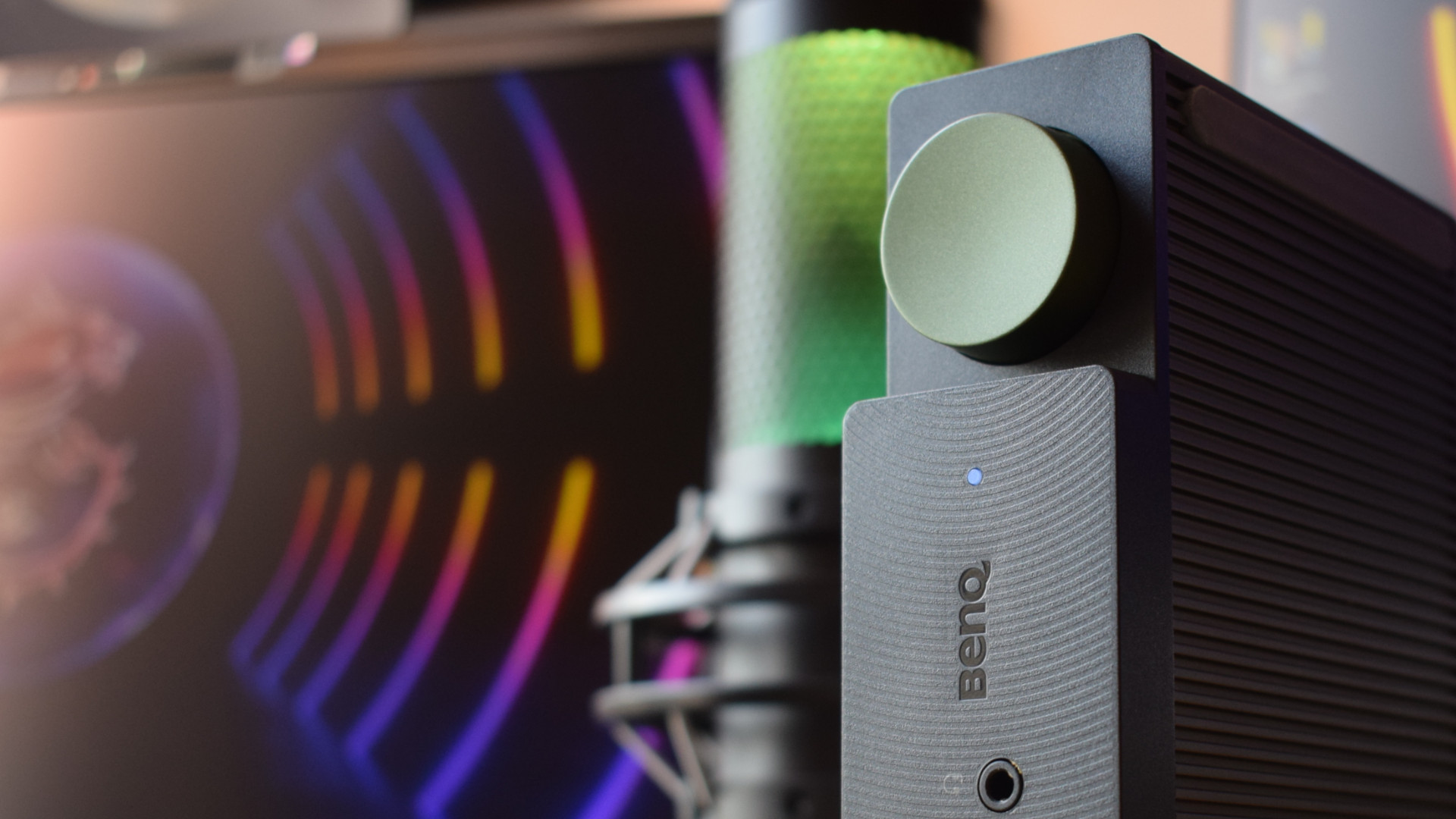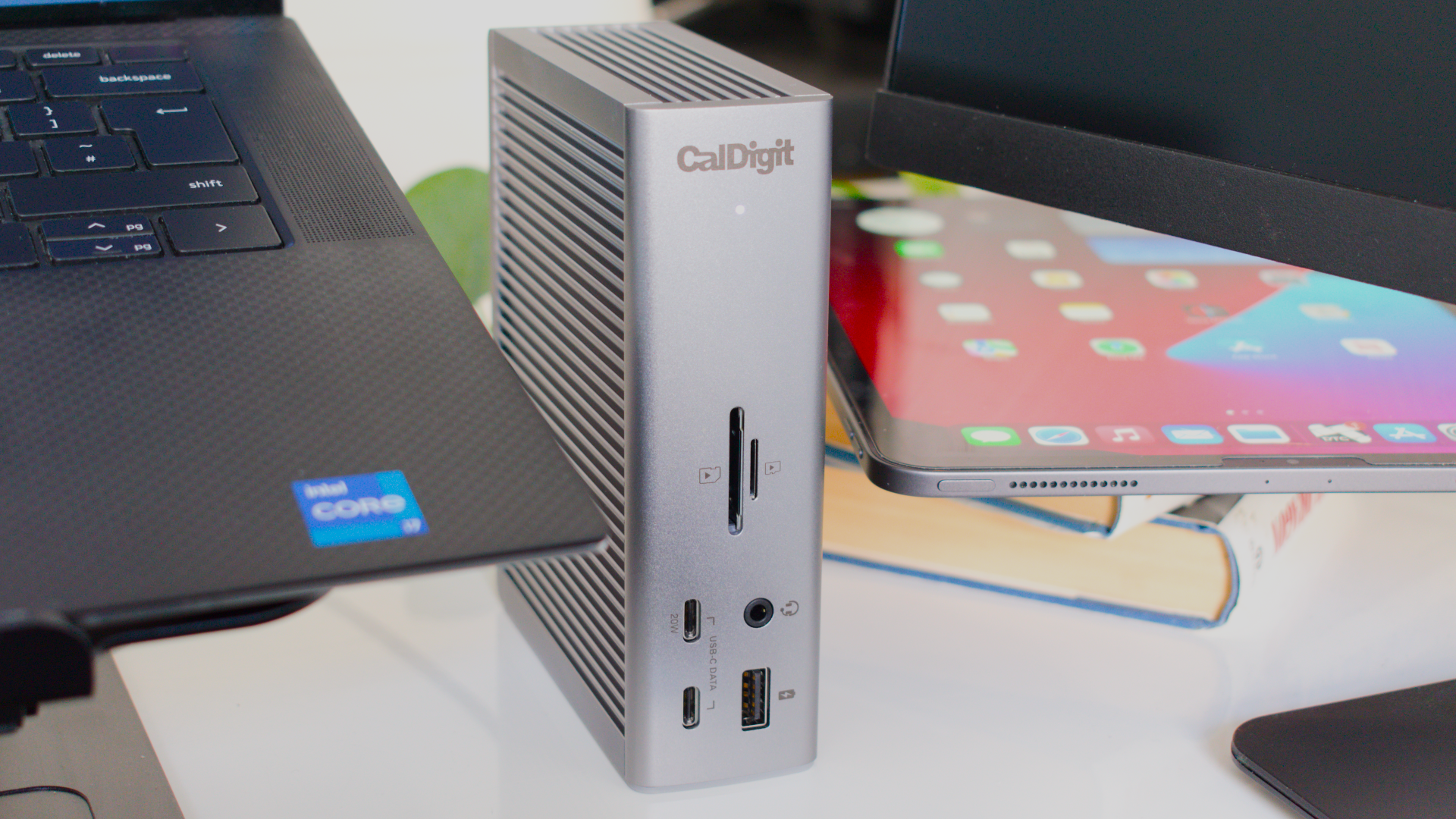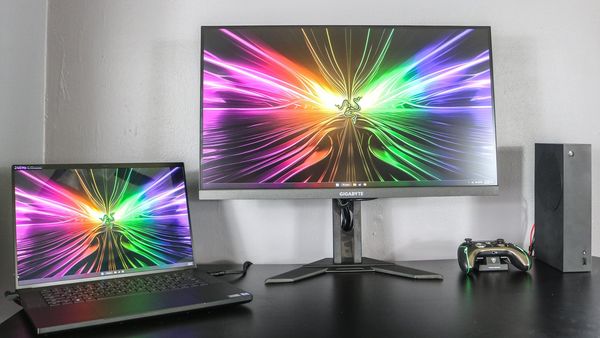
Docking stations are a considerable investment, often costing hundreds of dollars for hardware decked out with the most cutting-edge tech. That’s why it’s vitally important that you make the most informed choice possible when it comes to purchasing one of your own.
While we have a solid selection of hardware showcased in our best laptop docking stations buying guide, you still need to be keenly aware of what connections your device can support, what its power requirements are, and whether or not a dock’s port selection has everything you need to ensure there’s room for peripherals and accessories like mouse, keyboard, computer speakers, webcam, and more.
However, even after that, there are several other things to keep in mind when it comes to buying the best laptop docking station to suit your needs. Many of these are often overlooked and can lead to frustrations further down the line. With that in mind, we’ve highlighted some key things to keep in mind when you shop for a dock so you don’t get caught out after checkout.
What is a docking station?
In their simplest forms, docking stations are hardware port expansions capable of providing a host machine with a myriad of ports at the expense of just one (or in rare instances two). These ports can include various forms of USB, card readers, or audio and video outputs, all of which can play a vital role in maximizing the functionality and effectiveness of your computer.
If you’re a laptop user then you’re already keenly aware that additional ports are among the first things to get cut in many a manufacturer’s quest to design slimmer and smaller notebooks. While you may receive a pair of faster Thunderbolt ports in return, the lack of port variety can severely hamper any plans you might have when it comes to building a more fleshed-out work-from-home setup or gaming battle station around your device.

A docking station’s ability to multiply your port selection makes it an essential piece of hardware for situations like this. Laptop docking stations instantly unlock the full potential of your laptop, aiding cable management, and even giving you an alternative to your laptop’s charger with many docks offering USB-C Power Delivery at or around 100W.
Finally, docking stations make for an ideal platform from which to manage any external displays. While the vast majority of docking stations will support at least one external monitor, some docks offer support for up to four additional screens, each of which is capable of 4K resolutions with a refresh rate of 60Hz. Depending on the dock, you may also find support for 5K and 8K displays, too.
4 things you need to know before buying a docking station
Picking the right docking station to buy requires more than knowing how many ports it offers, with many factors to consider about each feature touted by these priceless port extenders.
While some things are obvious, such as only looking to purchase a Thunderbolt 4 docking station if you own (or plan to own in the near future) a Thunderbolt 4-compliant laptop. Other things on the “Before you buy” checklist aren’t so easily deciphered.
With that in mind, we’ve done some of the legwork on your behalf and drawn up a short list of some of the less obvious things you need to know before you buy a docking station. Let’s dive in and make sure you’re well equipped to get well equipped.
Thunderbolt docking stations don’t always offer Thunderbolt ports
This seems counter-intuitive at first, but it’s accurate. Just because a docking station is marketed as a Thunderbolt dock, doesn’t necessarily mean that it includes any high-speed ports for Thunderbolt accessories.
All Thunderbolt docking stations will include at least one Thunderbolt port, but, in those instances, the Thunderbolt port in question is typically reserved for the connection to the host machine, and won’t be available to use with peripherals or accessories.
Case in point, the Plugable Thunderbolt 4 & USB4 Quad Display Docking Station is clearly marketed for its Thunderbolt 4 and USB4 capabilities. However, only the host machine is granted a Thunderbolt port, while the rest of its USB ports are speedy Type-A and Type-C options.


While your first instinct might be to cry foul, this is actually done to ensure there is as little a performance bottleneck as possible — giving each port on the dock a fair share of bandwidth to make use of, making it a top option for those juggling a lot of additional components at once.
Elsewhere, the CalDigit Thunderbolt Station 4 includes two additional Thunderbolt 4 ports, ideal for making use of external storage or even an eGPU (though you’d preferably want to connect such a device directly to your laptop for reasons we’re about to make clear).


While it’s great to be refunded your Thunderbolt 4 port (and then some), if you’re running Thunderbolt accessories on both of these ports, the data from each still has to be channeled through a single 40Gbps Thunderbolt connection, which could have a significant impact on performance for both.
Be sure to count the total amount of Thunderbolt ports available on any dock you’re currently checking out and always keep in mind that just because a Thunderbolt dock has several additional TBT4/USB4 ports to make use of, that doesn’t guarantee you’ll be able to make use of them all to their fullest at the same time.
Not all laptops support external displays
If you’re looking to pick up a docking station with the idea that you can expand your screen real estate with one or more external displays, then you’re going to need to be sure that your laptop can do so first.
While it seems safe to assume that connecting a USB Type-C docking station to a USB Type-C port on your laptop should have you on your way without any issues, technology simply refuses to be so simple.
If you want to make use of external displays while using a USB Type-C docking station, then it needs to be connected to a very specific type of USB Type-C port. Namely, a USB Type-C port that features DisplayPort Alt Mode (DP Alt Mode).

If you’re making use of a laptop with Thunderbolt ports then you don’t have to worry, you’re good to go. However, if you’re limited to standard Type-C ports, you’ll need to check the symbols next to the port to ensure your ports are up to spec for transmitting video.
If it is, you’ll be able to spot a symbol showing the letter ‘D’ overlaid by the letter ‘P’. If you don’t spot any symbols near your Type-C ports then you may need to check your laptop’s documentation for a more accurate reading of its specifications.
Some docking stations may not support your display
Further complicating matters is the fact that not all docking stations are created equal, and will therefore offer varying levels of support for certain resolutions, refresh rates, and display outputs when it comes to supporting external displays.
Just about every dock that features display outputs will typically support at least one additional display with a 1080p resolution at a refresh rate of 60Hz. Most USB Type-C docks like the Logitech Logi Dock can support at least two 4K displays at 60Hz, with some also offering support for a single 8K display at 30Hz.


Some USB Type-C docking stations, like the BenQ beCreatus Hybrid Dock will push those specs even further, supporting up to three 4K displays at 60Hz, or a single 8K display with a far smoother than most refresh rate of 60Hz.
Thunderbolt and USB4 docks have a higher bandwidth and can therefore allow for more display options, with docks like the Plugable Dual HDMI Docking Station (UD-4VPD) being far more ideal for gamers thanks to its ability to support two external 4K displays with refresh rates of 120Hz.


Other docks like the previously mentioned Plugable Thunderbolt 4 & USB4 Quad Display Docking Station focus on maximizing your display output over sheer speed, becoming workstation and productivity wonderlands with support for up to four 4K external displays at 60Hz.
It’s also vital that you identify which version of HDMI or DisplayPort your monitor and dock supports. While you can connect the video output of a docking station with an HDMI 2.1 port to a monitor running at a lower version (and vice versa) you will lose out on the benefits that this upgraded port can offer, including higher resolutions and faster refresh rates.
It’s always worth comparing the specs of any given docking station against your current monitor for any issues where performance will be wasted in this way. Especially as docks that make use of these higher-spec ports will typically end up costing you more, and there’s no sense in paying extra for something you can’t make use of.
You might not need a docking station
Finally, there’s always the possibility that you don’t need to pay top dollar for a fancy docking station because you don’t actually need one.
Docking stations are essentially a way of ensuring your laptop can be used as a viable desktop replacement, expanding its ports, allowing for more peripherals or accessories to be connected, and enabling you to expand your screen space with external displays.
However, not everybody needs all of those things, and not everybody is looking for a desktop replacement, either. Sometimes all that’s really needed are a few extra ports to hand, something to help keep the power on if your laptop’s charger develops a fault, or a device to temporarily grant you access to an SD card/micro SD card reader when you want to backup some files or photos.

In this instance, it probably doesn’t make a great deal of sense for somebody to blow anywhere up to $500 on a docking station when they’re unlikely to see much of a return on their investment. So, why not invest in one of the best USB Type-C hubs instead?

Like docking stations, USB hubs offer more ports and video outputs. Unlike docking stations, they’re often infinitely more portable and far more of an affordable option. For example, the Plugable USB-C 7-in-1 Hub (pictured) offers an SD/micro SD card reader with a USB Type-C and three USB Type-A ports alongside an HDMI 1.4 video output capable of hosting a single external display at 4K resolutions at a refresh rate of 30Hz.
Better still, it offers all of this at a price tag of just $39.95, and can be routinely found on sale at a discounted rate. This is enough for some people, with a hub being more than adequate as a laptop accessory that does the job it needs to and can be stashed away until it’s next needed.
Outlook
These important, yet often overlooked points are essential reading for anyone looking to buy a docking station. If you feel well-armed enough to go ahead and make your decision, we suggest you take a closer look at our list of the best docking stations for 2024 — it’s a list curated by myself, featuring only docking stations that I’ve personally reviewed on behalf of Laptop Mag.
There’s an interesting mix of docks to be found on the page, and many of the docks mentioned here can be found on that list, too. All with a strong bedding of information to learn more about what each doc could be best suited for, how it can benefit you, and reasons both for and against picking one up.
If you still need more help in your decision or just want to know more about docking stations, we’ve also compiled a short list for further reading on the topic below.










